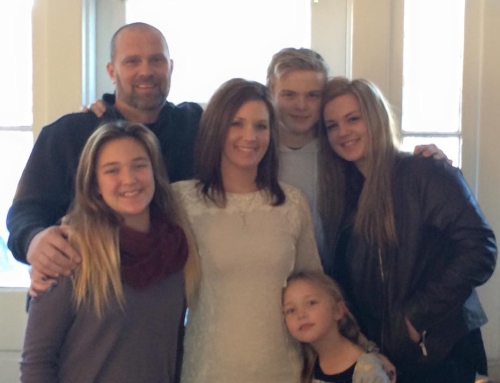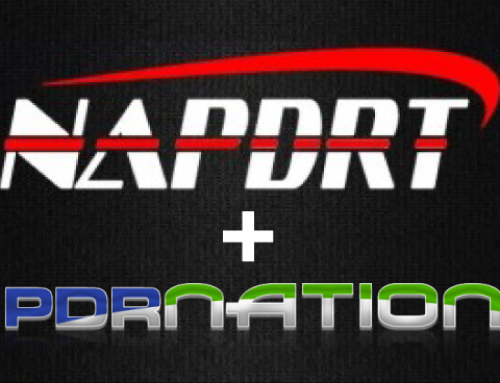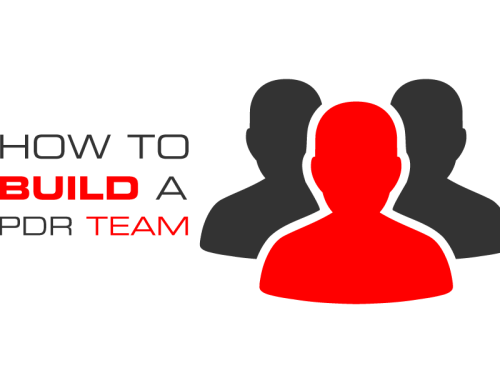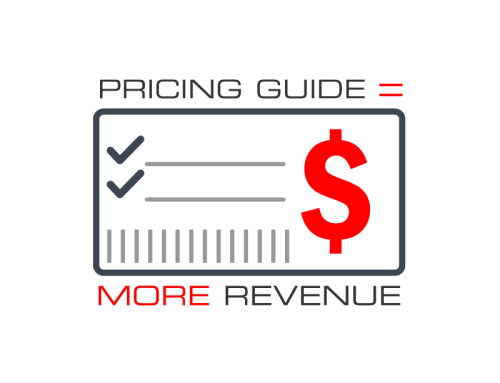The Paintless Dent Repair (PDR) business is a labor-intensive business. No matter how good your PDR tools & processes are, you have to have good employees to grow. EZ Dent is a PDR business based in Athens, GA, founded by Matt Moore. They offer multiple automotive appearance services in their retail shop, along with mobile dent repair. The business has grown quickly by establishing proper hiring and training practices, resulting in an incredible team in North Georgia. Having a team of techs and supporting cast that buys into and contributes to the EZ Dent system is key in maintaining excellent dent repair results, customer service, and growth.

Team building with Matt Moore and EZ Dent.
Here are 8 tips EZ Dent would like to share with fellow PDR businesses about hiring & training new employees.
1. Define Roles & Processes
Since many PDR business owners come up via the solo technician route, they usually know the entire process by memory. From initial customer contact to handing the keys back, it’s just a single process of “doing PDR.”
But “doing PDR” or trying to hire your clone doesn’t work, especially if you are hiring a brand new, untrained employee.
We recommend breaking your entire customer process into individual tasks before hiring your first employee. For an entire month, write down every single mini-task that you complete to run your business. Create a process map with a task list.
This task list will be invaluable with training. You’ll make sure that you are training your employee on every task. Your employee will be able to understand the entire process and see where they fit in.
And during hiring, you’ll be able to write a compelling, descriptive job description. You can set expectations early, and your employee will be less likely to get frustrated at vague or generic feedback.
2. Identify Your Strengths & Weaknesses
As the PDR business owner, you will be initially better at every task than a new employee. But business growth comes from an effective division of labor. For that to work, you have to be able to name your own strengths and weaknesses and then hand off your weaknesses to employees who can do them well.
You should take the process map and task list that you made in #1 and pick out the tasks that you aren’t as good at or you don’t enjoy.
This means that every PDR business will have a different hiring sequence. Some will hire an office manager earlier than others. Some will hire all techs or all estimators or only R&I techs. Either way, you have to approach it systematically based on your own strengths & weaknesses.
3. Focus on a Single Hiring Channel
There are so many ways to recruit and bring in new employees. Our tip is to pick a single hiring channel and focus.
If you are driving applications with different channels, you’ll get a very uneven and frustrating pool of applicants. Don’t mistake the hiring practices of companies trying to hire 1000s at a time with a company trying to hire 1 or 2 at a time. Pick a channel (online, word of mouth, referrals, colleges, trade programs, Facebook, etc.), create a process, and stick with it.
4. Teach the Process
With PDR, every part of the process dictates how every other part is done. For example, you can’t separate PDR costs & estimates from quality control.
Even if you are hiring for a specific task, you must teach every employee the value and overall picture of the entire process. Every employee needs to know where they fit and how they affect everyone else. Your R&I techs need to understand how their job can affect other techs and management all the way out to a customers experience.
5. Train the Tasks
We have found that letting new employees focus on training on a single task at a time speeds their growth and helps them move into a role faster.
This is where your task list comes in handy again. It not only allows employees to learn faster, but it also gives them freedom and autonomy to train themselves and track their own progress.
We generally start with R&I training and then, once mastered, move on to PDR training.
6. Encourage Growth
The best employees grow through your company and take on more or different parts of your process. This is where your Process Map and Task List comes in handy again.
Instead of hiring a person for a specific role and then letting them get bored, frustrated, or cynical – you can be open and transparent about the tasks available and the relative value of your processes. Encourage employees to grow and earn a bigger share of the rewards.
7. Be Transparent about Rewards
There are entire books about employee incentives and pay structure. But whatever structure you use, we’ve found that employees need to know that your business is a place where there is always more money to be made. They need to know that if they help the business do well, they will also do well.
This goes back to encouraging growth and training. Show employees where the value is at each part of your Process Map. Make sure they understand exactly how they can grow as employees and exactly how they can grow the business.
8. Trust Your Team
Few actions kill a team like micromanagement. If you micromanage your employees, they won’t grow their skills and won’t grow your business. Plus, you’ll end up just as much work as you had before, but with a lot more overhead. Trust your team and your process.
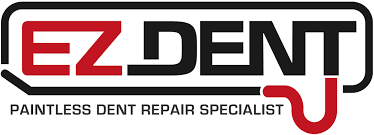
Matt Moore is the owner of EZ Dent, an Exterior Automotive Specialist based in Athens, GA and serving throughout North Georgia.

